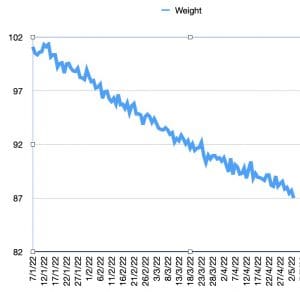Zone Diet. It Works.
In mid January 22, my medico told me to lose weight. I was 101 kg at that time. In early May 22 I am now 87kg. I have lost 14 kg in 14 weeks. I has come off my gut which has decreased by 12cm. What did I do? I followed Barry Sears Zone Diet method. What is that?

Zone Diet Method
- Dr Barry Sears made a name for himself developing Cancer treatment medication. In about mid 90s, he shocked his colleagues by switching his effort to tackling (developing solutions to) the obesity epidemic that is sweeping the world. He has an extremely good understanding of how the human body responds to intake of different foods and how to reduce weight effectively. In recent years, he has concentrated further to tackle ‘chronic inflammation’ in the human body – how this chronic inflammation causes chronic diseases (especially diabetes) and how to reduce that inflammation and so have a good go at reducing those chronic diseases.
- Key Points
- Three meals a day, each less than 400 Calories.
- Up to three snacks a day – each about 100 Calories.
- Maximum of 1,500 Calories per day. Therefore, it is an intake reduction diet. It is NOT (as many pundits claim) a ketogenic diet. Dr Sears is insistent that these just don’t work as there are too hard to maintain.
- Balance Protein and Carbohydrate for each meal in the ratio 5:7.
- Default Protein intake for each meal is 25g. That 25g increases the more you seriously exercise. With 25g Protein you need 35g Carbs. Because, I exercise a bit, I have been using 28g Protein balanced with 39g Carbs for each meal.
- This balance is crucial to the diet’s success. It does quite a few things: prevents hunger or tiredness; prevents weight gain; controls weight loss so only fat comes off. If you don’t balance, your body will add weight.
- You can fine tune the Protein: Carb ratio. If you get hungry add a little more Protein. If you get weary/tied add a little more Carbs.
- Record everything you eat and drink. What get measured gets managed.
- That is it. Quite easy. It does need constant weighing of what you eat. I also use the Easy Diet Diary app to record everything. You do have to stick to it rigorously. You should not get hungry. The weight should just fall off. For me it has.
Resources
- Two Barry Sears books. The Zone (1995). The Resolution Zone (2020).
- Zone website. Includes products, resources and blogs.







